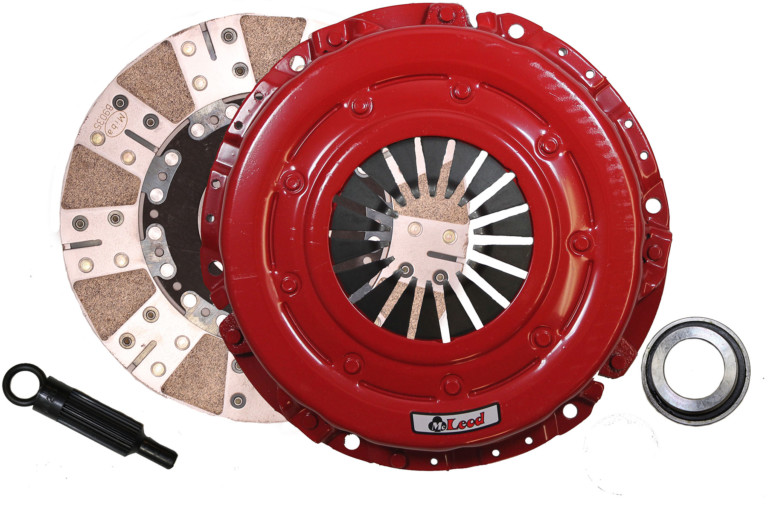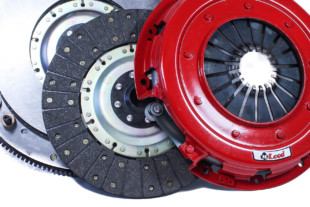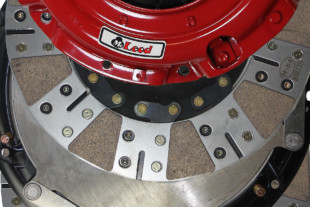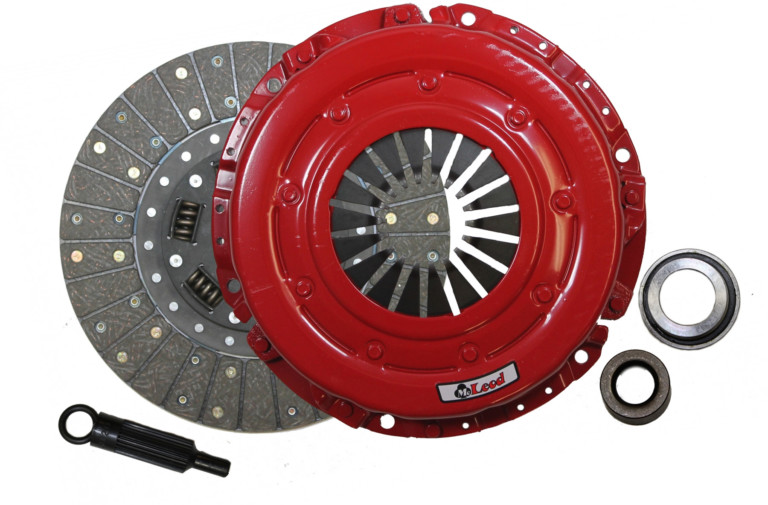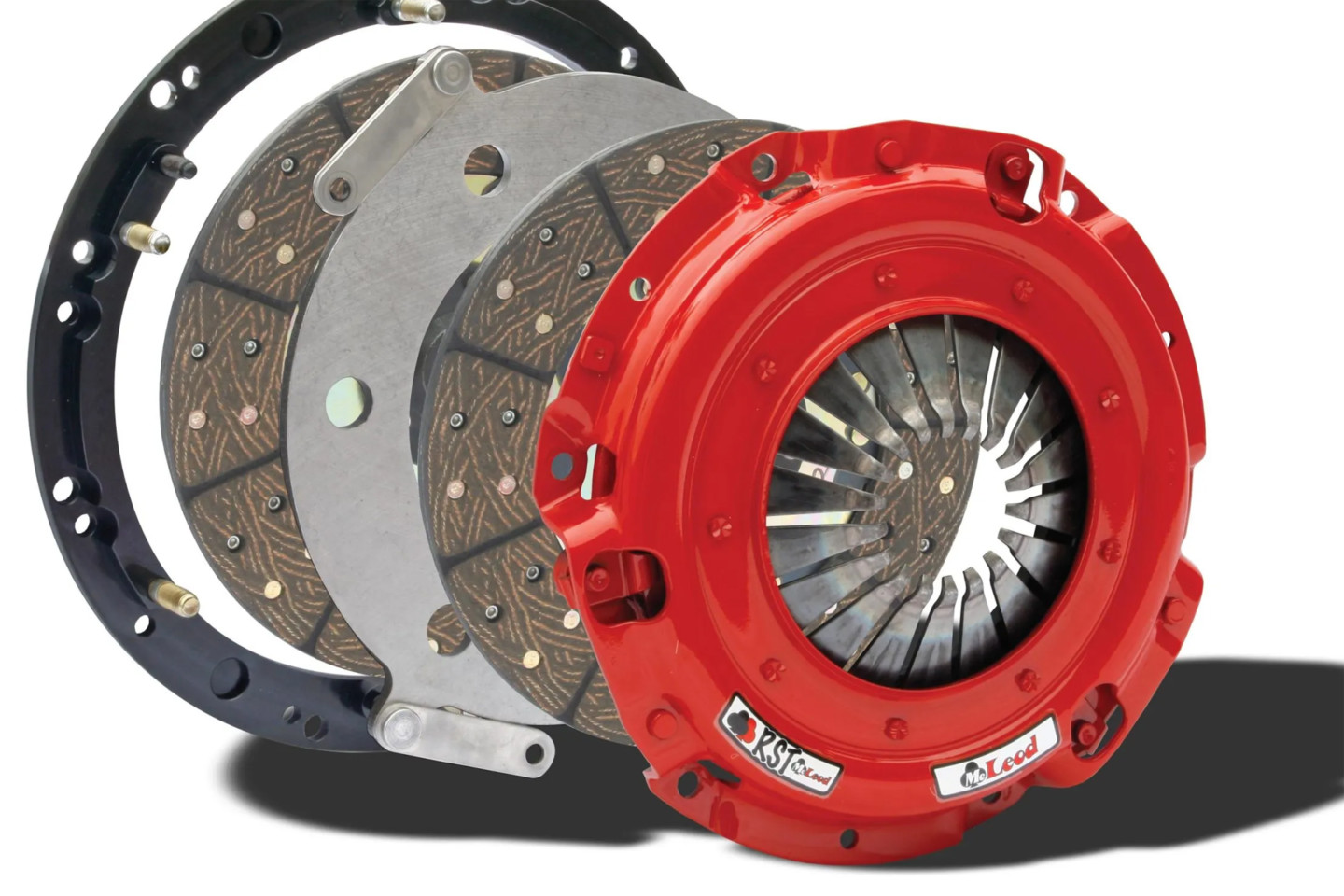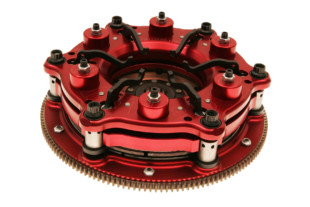During the muscle car era, performance junkies wanted to dump the clutch on their killer four-speed in their new car. Amid those years, the manual transmission was not exclusive to the hot-rodder. It was the standard option in most cars and was a way of life. Automatic transmissions were a luxury that many did not feel was needed.
Now, many enthusiasts want the experience of grabbing gears in their classic, but also want a clutch that doesn’t require enough force to cause leg cramps when holding the pedal. To learn more about clutch design — why some have a harder-to-push pedal than others and selecting the best parts for your need — we reached out to the folks at McLeod to get some insight.
McLeod offers a large variety of single- and dual-disc clutch kits that have been individually developed for specific horsepower levels and driving duties from stock replacement to 1,200-horsepower applications.
So Many Clutch Choices
Digging into clutch selection, one of the first things noticed are the many designs and styles available. A cursory search finds single-disc units as well as multi-disc designs, coupled with several pressure plate options. But when is a single disc sufficient? When is a multi-disc required? And, why are there different pressure plates?
“When deciding on a clutch, horsepower ratings are just one of the variables to consider,” says Bob Scheid, vice president at McLeod. “If you are going to operate the car on the street with occasional track use, or more so at the track with occasional street use, you need to appraise your driving style. Different people drive cars differently and/or launch cars differently at the track. An honest assessment concerning the stress and load on the clutch is a big factor in choosing the right one.”
Clutch engineering, combined with new organic- and ceramic-surface materials, has drastically improved a clutch's ability to handle big power without pedal pressures that kill your left leg. There are also new steel, aluminum, nodular iron, and chromoly flywheels from McLeod with improved friction surface designs.
Choosing the correct clutch also requires reading into the nuances between each model. While various units will handle comparable horsepower levels, changes in friction material and overall design will provide advantages to some. However, they might cause concerns for others. “For a street-only car that is not going to be taken to the track, you can stick to the choice based on horsepower ratings,” says Scheid.
From Mild To Wild
One of McLeod’s most popular single-disc clutches is the Street Pro, which would be right at home behind engines near the 550-horsepower or 400 lb-ft torque level. Scheid describes, “If you’re going to unleash your car on the street and/or occasionally take it to the dragstrip or autocross, you need to bump that up to something like our Super Street Pro or Street Extreme clutch.”
The primary upgrade to the Street Extreme clutch is its SFI-approved design. It also has a dual-face ceramic disc and a high-clamp-load pressure plate. This level of clutch can be mated to engines at the 550-horsepower zone with big engine mods and street tires. As Scheid previously eluded to, more than just horsepower levels should influence your choice. Parameters such as the weight of your car and the rearend ratio must also be considered.
McLeod's Street Level kit (left) is for cars up to 300 horsepower. This OE-replacement clutch offers a high-clamp-load pressure plate and an organic disc for smooth and even engagement. Their next-level Street Pro (right) utilizes similar material, but can hold 400 horses with its steel lining that absorbs more heat.
“Let’s say you have an engine with around 800 horsepower. That power will come in quicker and change your driving style and clutch choice,” he says. “So, if a car is going to be launched at 7,000 rpm, that application should utilize our Street Extreme clutch to engage the power at that RPM.
Dual-Disc Clutches
“Twin-disc clutches follow similar rules regarding disc material. If you see an organic disc, it is a street disc,” clarifies Scheid. “When you’re buying a clutch, an organic disc is not made to take the abuse of the track. A twin-disc, though, allows it to hold so much power. So, there are a couple of things that are slightly different. A twin-disc design essentially provides twice the clamping surface but does not require twice the pedal pressure.”
Bob continues, “McLeod uses a strap to fasten the floater disc in a dual-disc clutch. The strap is designed to allow clutch actuation with reliability and predictability. It also prevents heat build-up. Other floater designs ride on pins, and those materials heat up. The floater pins can bind on the pins. The only way to prevent that binding is to make that tolerance so great, it makes a ton of noise when cold.”
Moving into the 800- to 2,000-horsepower arena, McLeod has a twin-disc design. The twin-disc assembly starts with the flywheel, followed by two friction discs separated by a floater plate. Similar to single-disc applications, friction materials and engineered pressures can handle varying power levels.
Intended for the high horsepower street fan, the McLeod RST twin-disc kit is an economically priced assembly. Able to handle 800-horsepower, these organic-lined discs will provide smooth, streetable engagement with a soft pedal effort.
The next step higher is the RXT twin-disc street kit that can handle 1,000-horsepower. The RXT option uses ceramic-lined clutch discs that provide smooth engagement with a soft pedal effort. That makes this clutch kit ideal for street performance enthusiasts. This clutch is perfect for the person wanting the best of both worlds.
Scheid elaborates, “These two clutches, plus the RXT1200, each use a 9.687-inch diameter clutch with changes in the clutch disc material. This smaller diameter requires less diaphragm pressure. That decrease in pressure gives us an easier pedal, similar to stock. People will call us and say, ‘something’s wrong with my clutch, it’s too easy.’ It’s designed that way, including the RXT1200 that can handle 1,200-horsepower.”
The final of the street-oriented clutches is McLeod’s Original Street Twin. This clutch has larger 10-inch diameter discs compared to the previously mentioned twin-disc units. It can hold 1,200-horsepower with organic discs and 1,400-horses with ceramic discs.

Bob Scheid describes McLeod’s unique floater disc design, “A strap fastens the floater disc in the clutch. This strap is designed to prevent heat build-up. Other floater designs ride on pins which heat up and subsequently tend to bind on the pins.”
“The Original Street Twin clutch design was born in 1974,” notes Scheid. “It has a little bit more holding pressure due to the clamping forces of the pressure plate. It gives you a bit firmer-than-stock pedal feel but is super popular for the most extreme street/dragstrip cars using superchargers, turbochargers, or nitrous oxide.”
Material Benefits
Organic Material:
Organic clutch discs can be had in two mediums: woven and molded. In woven discs, fiberglass is woven into the friction disc, increasing durability and longevity. Organic discs deliver smooth engagement.
Heavy-Duty Organic Material:
Heavy-duty organic clutch materials are the same except they contain additional metallic components. This means they’re more heat resistant. They can withstand temperatures as high as 700 degrees. However, when it comes to engagement smoothness, these clutch discs are identical to organic clutch discs.
Ceramic Material:
Ceramic clutch plates are made with a combination of copper, iron, bronze, silicon, and graphite. Because of their metallic content, these discs can withstand a lot of friction and heat. This makes them ideal for race cars. However, engagement and disengagement won’t always be very smooth.
Kevlar Material:
Kevlar discs have two key benefits: they’re incredibly durable and they engage smoothly. They last longer than organic-material clutch discs. These are an ideal choice for machines that require smooth, precise movement. Their only downside is that they have a long break-in period before they feel right.
Applied Pressure
When it comes to the pressure plates that apply the clamping pressure, you have a couple of choices. First is the diaphragm style. This is a proven design and is the most common we typically find in use today. Different variations of this overall design utilize cone-type fingers that are acted upon by the throwout bearing. The clutch disengages when throwout bearing force is applied against the springs. Most McLeod clutches use the diaphragm pressure plate design. It can be found in everything from their single-disc, stock replacement units to their 1,200-horsepower twin-disc RXT clutch.
Beyond the diaphragm-style pressure plate, we move into what generally appears as a pressure plate with three levers or “fingers” that apply clutch pressure. This design is typically called the Borg & Beck or Long-style pressure plate. These levers typically engage the clutch similarly to the diaphragm but do not function as the spring. Separate and tunable coil springs act against the fingers to perform the unclamping duty within the pressure plate as the pedal is depressed.
Complex versions of the finger-style clutches offer more tunability in extreme motorsports applications. For example, counterweights on the clutch fingers can pivot and apply additional clamping forces against your clutch disc or discs. When it comes to choosing a pressure plate, both function well. However, the diaphragm style will deliver an easier to depress pedal.
Clutch Break-In
Due to the technology incorporated in today’s clutch materials, a new clutch requires a break-in period. You may get a little bit of chatter or a little bit of smell as it breaks-in. Once you’ve broken it in and carefully followed the break-in procedure, it is very friendly on the street.
“With our McLeod clutches, a 500-mile break-in period is necessary,” Scheid warns. “That’s a regular stop-and-go driving regimen that totals approximately 900 clutch cycles. You can’t just hop on the freeway with these new performance clutches and drive across a state. It’s got to be on and off the pedal, so you get heat cycles in and out of the clutch materials.”
Just like many other great performance products, McLeod's active research and development with Nitro racers Paul Lee and Krista Baldwin finds its way back into all of their product lines.
One of the biggest mistakes Scheid sees is someone who installs a new street or race clutch and directly puts the car on a chassis dyno. “The harmonics of a chassis dyno destroy a brand-new clutch without following its break-in agenda.”
Bob is very optimistic about the performance world regarding manual transmissions. Between the sales numbers of brand-new muscle cars with manual transmissions and the popularity of retrofitting manuals into so many classic cars, McLeod continues to grow and stay on top of new technology.
“People still love that feeling of driving their car with four- or five-speed manual transmissions. There is nothing better than the feeling of rowing through those gears in a street car,” finishes Scheid.




